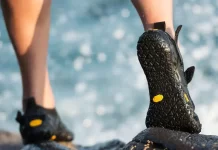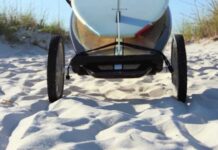When it comes to taking our stand up paddle board out on the water, we want to make sure we’re fully equipped with all the necessary accessories for a fun and successful adventure. From safety essentials to added comfort and convenience, we’ve got you covered with a selection of accessories that will enhance your paddleboarding experience. So grab your board, strap on your leash, and let’s explore all the must-have gear that will take your stand up paddle board to the next level.
Leash
A leash is an essential accessory for any stand up paddle boarder. It may seem like a simple piece of equipment, but its importance cannot be underestimated. A leash attaches your board to your ankle or waist, ensuring that it does not drift away from you when you fall off. It keeps the board close by, allowing you to easily retrieve it and preventing it from becoming a hazard in the water. Without a leash, you could spend valuable time trying to catch up to your board, or even worse, be separated from it completely. So, before hitting the water, make sure you have a leash securely fastened.
When it comes to choosing a leash, there are a few different options to consider. The first is the traditional ankle leash. This leash is attached to your ankle with a Velcro strap and a comfortable padded cuff. It keeps the board securely attached to your leg, allowing for freedom of movement while ensuring that the board stays nearby. Another option is the waist leash, which is worn around the waist and attaches to the board via a coiled cord. The waist leash provides a slightly different experience, allowing for a wider range of motion and a different distribution of pull. Both types of leashes have their advantages, so it’s important to consider your personal preferences and paddling style when making a decision.
Paddle
Choosing the right paddle is key to enjoying your stand up paddle boarding experience to the fullest. The paddle is the tool that propels you through the water and provides stability and control. It is important to choose a paddle that is the right length and made from materials that suit your needs.
When it comes to paddle length, the general rule is that it should be 8-10 inches taller than you. This allows for maximum efficiency and power, while also accounting for the height of the board. It is important to find a balance between a paddle that is long enough to allow for proper technique and power, but not so long that it becomes unwieldy.
In terms of materials, paddles can be made from a variety of options, including aluminum, fiberglass, carbon fiber, and wood. Aluminum paddles are a popular choice due to their durability and affordability. Fiberglass paddles offer a good balance of performance and price, providing sufficient strength and lightness. Carbon fiber paddles are the top-of-the-line option, known for their lightweight construction and superior strength. Wood paddles offer a unique aesthetic appeal and have a warm feel in the hands.
Life Jacket
Safety should always be a top priority when engaging in any water activity, and stand up paddle boarding is no exception. Wearing a life jacket can be a lifesaver in the event of an emergency or unexpected circumstances. It provides buoyancy and ensures that you stay afloat if you fall into the water. Life jackets are especially important for beginners or those paddling in rough or unfamiliar waters.
When purchasing a life jacket, it is important to make sure it meets safety regulations and is designed specifically for paddle boarding or other watersports. These life jackets are typically more streamlined and allow for greater freedom of movement compared to traditional bulky life jackets. They are designed to be comfortable to wear for extended periods of time and often feature adjustable straps to ensure a proper fit.
Choosing the right size is crucial for a life jacket to effectively perform its job. Life jackets come in various sizes, so it is important to refer to the manufacturer’s size chart and properly measure your chest circumference to find the right fit. A well-fitting life jacket should be snug but not overly tight, and it should provide unrestricted movement of your arms and torso.
Board Bag
A board bag is an essential accessory for any stand up paddle board owner. It not only protects your board from scratches, dings, and dents but also makes it easier to transport and store. Investing in a board bag can greatly extend the lifespan of your board and ensure that it remains in optimal condition.
When it comes to protecting your board, there are a few different types of board bags to consider. The most basic option is a day bag, which is designed to provide minimal protection during short-distance transportation and storage. Day bags are usually made from lightweight materials and feature a simple zipper closure. They are a good option for those who primarily paddle close to home and want to keep their boards protected from minor scratches and UV damage.
For those who travel longer distances or want extra protection, a travel bag is a better choice. Travel bags are typically made from thicker, more durable materials and feature additional padding and reinforcement. They often have wheels and handles for easy maneuverability, making it convenient to transport your board through airports or to remote locations.
When choosing a board bag, it’s important to consider the features that are important to you. Some bags have additional pockets or compartments for storing accessories such as paddles, fins, or wetsuits. Others may have ventilation features to prevent moisture buildup or even built-in backpack straps for added convenience. Consider your individual needs and preferences to find the board bag that best suits you.
Ankle or Waist Leash
In addition to the traditional leash, stand up paddle boarders have the option of using an ankle or waist leash. These alternative leash options provide a slightly different experience and can offer certain benefits depending on the individual’s preferences and the conditions in which they paddle.
An ankle leash, as the name suggests, attaches to your ankle with a Velcro strap and a padded cuff. It keeps the board securely attached to your leg, allowing for freedom of movement while ensuring that the board stays nearby. An ankle leash is a popular choice for many paddle boarders due to its simplicity and effectiveness. It is especially beneficial for those paddling in calm waters or small waves, where the risk of being separated from the board is relatively low.
On the other hand, a waist leash is worn around the waist and attaches to the board via a coiled cord. The waist leash provides a slightly different experience compared to the ankle leash. It allows for a wider range of motion and a different distribution of pull, as the leash is attached to the waist rather than the leg. This can be advantageous for paddlers who engage in more dynamic activities, such as SUP surfing or whitewater paddling, as it allows for greater maneuverability and reduces the risk of entanglement.
Ultimately, the choice between an ankle leash and a waist leash comes down to personal preference and the specific conditions in which one paddles. It is important to consider factors such as the size of the waves, the strength of the current, and the level of experience before making a decision.
Dry Bag or Deck Bag
When heading out on the water, it is important to keep your belongings safe and dry. A dry bag or a deck bag is the perfect accessory for storing your essentials and ensuring that they are protected from water, sand, and other elements. These waterproof storage solutions are a must-have for any stand up paddle boarder who wants to keep their valuables secure and well-preserved.
Dry bags and deck bags come in various sizes to accommodate different storage needs. From small pouches that are perfect for holding keys, wallets, and phones to larger bags that can fit a change of clothes, snacks, and even a camera, there is a size to suit everyone. It’s important to think about what items you want to bring with you on your paddle and choose a bag accordingly.
Attaching methods can vary depending on the bag. Some dry bags have straps or clips that can be attached directly to the board, while others may be designed to be worn as a backpack or attached to a specific type of board deck. Consider how you prefer to carry or attach the bag, and choose a style that fits your needs.
Helmet
Safety should always be a priority, especially when engaging in more intense activities such as paddle surfing or river paddling. Wearing a helmet can provide crucial head protection in the event of an impact with the board, rocks, or other solid objects. A helmet can greatly reduce the risk of head injuries and give paddlers peace of mind during their paddling adventures.
There are different types of helmets available, each designed for specific water activities. For paddle surfing, a helmet with a lower profile and a snug fit is preferred, as it allows for greater maneuverability and comfort in the water. Full-face helmets are also an option for those seeking maximum protection, especially in more extreme conditions or when participating in whitewater paddling.
When choosing a helmet, it is important to find the right fit. A helmet should snugly cover the head without being too tight or too loose. Most helmets have adjustable straps or retention systems that allow for a customized fit. It’s crucial to try on different helmets and determine which one is the most comfortable and secure on your head.
Sun Protection
Stand up paddle boarding often takes place in sunny, outdoor environments, which means that sun protection is a crucial consideration. Prolonged exposure to the sun’s harmful UV rays can have serious consequences for your skin and eyes. To enjoy your paddleboarding experience to the fullest, it is important to prioritize sun protection and take the necessary steps to shield yourself from the sun’s harmful rays.
Using sunscreen or sunblock is essential for protecting your skin from the damaging effects of the sun. Look for broad-spectrum sunscreen with a high SPF rating and apply it generously to all exposed skin, including your face, neck, arms, and legs. Reapply regularly, especially if you are spending extended periods of time on the water or if you have been perspiring.
In addition to sunscreen, wearing a sun hat and sunglasses can provide additional protection for your face, eyes, and neck. A wide-brimmed hat or a hat with a neck flap can help shield your face and neck from direct sunlight. Sunglasses with UV protection are also crucial, as they can protect your eyes from harmful UVA and UVB rays. Look for sunglasses with polarized lenses, as they can reduce glare and provide clearer vision on the water.
Remember to hydrate regularly and seek shade when needed to avoid overheating or dehydration while out on the water. Protecting yourself from the sun’s harmful rays will ensure a more enjoyable and safer stand up paddle boarding experience.
Waterproof Phone Case
In today’s digital age, many of us rely on our smartphones for various activities and communication, even while out on the water. However, exposing your phone to water can be risky and potentially damage it beyond repair. That’s where a waterproof phone case comes in handy. It provides a protective barrier, keeping your phone safe and dry while still allowing you to use its functions.
When choosing a waterproof phone case, there are a few factors to consider. Look for a case that is rated for submersion up to a certain depth, especially if you plan on using your phone for underwater photography or if there is a chance of accidental drops into the water. Some cases offer additional protection against dust and shock, which can be useful if you typically engage in more adventurous activities or if you are prone to accidents.
Waterproof phone cases come in various styles, including pouches, sleeves, or form-fitting cases. Pouches and sleeves are typically more versatile, as they can accommodate different phone sizes and models. Form-fitting cases offer a more streamlined look and feel, providing a snug fit specifically for your phone model.
It’s important to remember that while a waterproof phone case can provide protection against water, it does not make your phone indestructible. Always use caution and avoid excessive exposure to water or other potentially damaging elements.
Board Rack or Carrying Straps
Transporting and storing your stand up paddle board can sometimes be a challenge, especially if you don’t have the right equipment. A board rack or carrying straps can make your life much easier by providing a convenient and secure way to transport and store your board.
A board rack is a dedicated piece of equipment that attaches to your vehicle or another sturdy surface, allowing you to safely transport your board. There are various types of board racks available, including roof racks, truck racks, and wall-mounted racks. Roof racks are a popular option, as they allow for easy loading and unloading of the board onto the roof of your vehicle. Truck racks are specifically designed for pickup trucks and provide a secure way to transport multiple boards. Wall-mounted racks are a great option for storing your board at home or in a garage, keeping it off the ground and out of the way.
Carrying straps are another option for transporting your board, especially if you don’t have the means to install a board rack. Carrying straps typically consist of adjustable shoulder straps that allow you to sling the board across your shoulder or back, distributing the weight and making it easier to carry. Some straps also feature additional padding or handles for added comfort and convenience.
Both board racks and carrying straps offer their own benefits, so it’s important to consider your specific needs and circumstances when making a decision. Whether you’re planning a road trip to a remote paddling spot or simply need a convenient way to store your board at home, having the right equipment can make all the difference in ensuring a smooth and hassle-free experience.





































